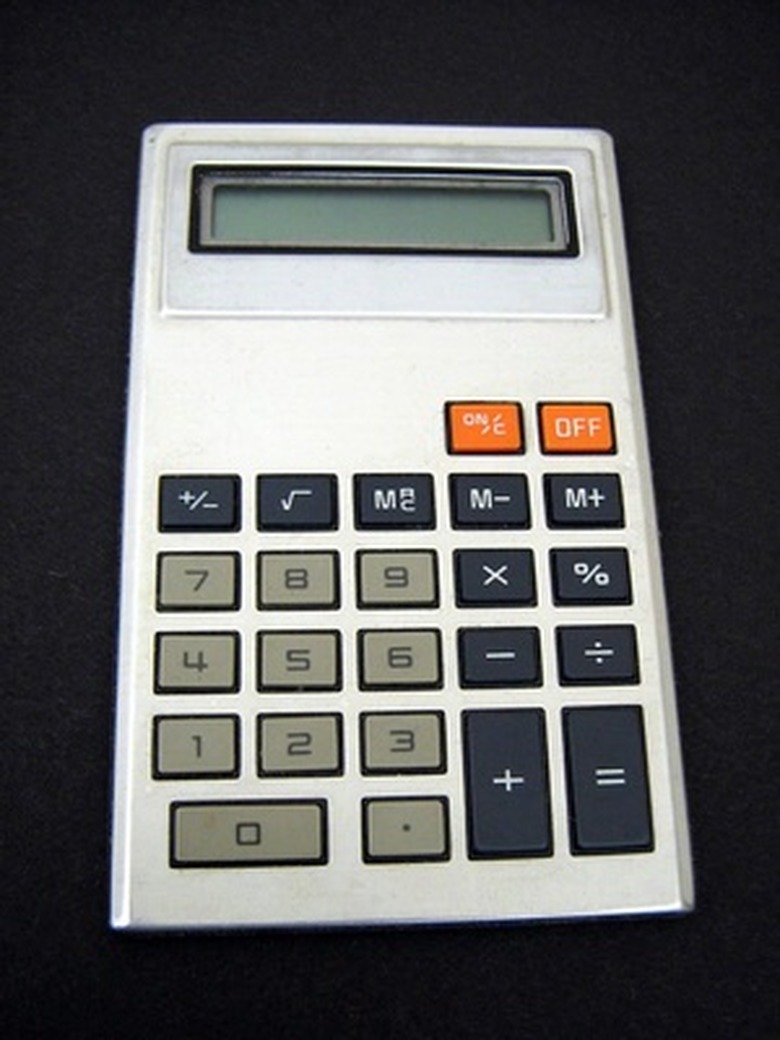How To Calculate Interest Rates
If you're offered the chance to borrow money, stop and think first: It almost always comes with "interest," or a percentage of the amount borrowed that you agree to pay as a fee for access to the money. In order to figure out how much extra you'll pay because of simple interest, you need to know two things: How much you're borrowing and what the interest rate is. There's also a sneaky concept called compound interest, which usually leads to the interest growing faster than you expect.
TL;DR (Too Long; Didn't Read)
To find simple interest, multiply the amount borrowed by the percentage rate, expressed as a decimal.
To calculate compound interest, use the formula **A = P(1 + r)n**, where **P** is the principal, **r** is the interest rate expressed as a decimal and **n** is the number of number of periods during which the interest will be compounded.
The Simple Interest Formula
The Simple Interest Formula
The simplest type of interest – no pun intended – is called simple interest. With simple interest, you pay a percentage of the starting amount as interest, and that's that. So in order to calculate simple interest, all you need to know is the starting amount you're going to borrow (called the principal) and the percentage interest rate you pay.
Multiply the two numbers together, and you'll have the total amount of interest you pay. Written as a formula, it looks like this:
I = P × r, where I is the amount of interest you'll pay, P is the principal, and r is the interest rate expressed as a decimal.
Although this formula gives you the amount of interest you'll pay, you can also calculate the total amount you'll pay (in other words, the interest plus the principal) with another formula:
**A = P(1 + r)**
Or you can simply add the amount of interest you calculate, using the first formula, to the capital. But keep that second formula in mind, because it'll come in handy during the discussion about compound interest.
An Example of Simple Interest
An Example of Simple Interest
For now, let's stick with the first formula for simple interest. So if you borrowing $1,000 at a rate of 5% interest, the amount of interest you'll pay is represented by:
I = P × r
Once you fill in the information from the example problem, you'll have:
I = $1000 × 0.05 = $50. So under these terms, you'll pay $50 in interest for borrowing $1,000.
How to Calculate Compound Interest
How to Calculate Compound Interest
Sometimes when you borrow money – and in particular, when you're dealing with credit cards – you'll be charged compound interest. This works like simple interest with just one catch, but it's a big one. After every time period, however much interest has accrued goes back into the pot and is treated as if it were part of the capital.
TL;DR (Too Long; Didn't Read)
What's a "time period"? Well, that depends on the terms of your loan. If your interest is compounded yearly, the time period is a year. If your interest is compounded daily, the time period is one day.
So if the loan from the previous example were based on compound interest, that $50 of interest that accrued after your first time period would go back into the pot, and for the next time period you'd be paying interest on $1,050 instead of the original $1,000. That might not sound like a big difference, but if your loan compounds frequently it can add up very quickly.
Happily, there's a formula to help you calculate compound interest, and it looks an awful lot like the formula for calculating the total amount paid (capital plus simple interest), with one addition:
**A = P(1 + r)n**
That n represents the number of time periods you're compounding the interest for, and the result A will be the total amount paid (principal plus interest). So, in the case of simple interest, n = 1, and the formula is simply **A = P(1 + r)n**.
An Example of Compound Interest
An Example of Compound Interest
So, what if instead of simple interest of 5%, that loan of $1,000 accrues 5% interest compounded yearly, and you expect to take three years to pay it back? Using the formula for compound interest, this gives you:
A = $1000(1 + 0.05)3= $1,157.63
That's more than three times as much interest as you would have paid with simple interest. But imagine if the interest were compounded daily instead of yearly. In that case, you'd arrive at the same amount of capital plus interest – $1,157.63 – after just three days.
TL;DR (Too Long; Didn't Read)
You could simply input your basic information – principal, interest rate and, if applicable, the number of time periods for compound interest – into an interest rate calculator or loan calculator (see Resources). But learning how to calculate interest yourself serves two purposes. First, it makes it easy for you to quickly estimate interest on your own, even if you can't do exact calculations in your head. And second, it gives you an appreciation for just how quickly interest rates can add up.
Cite This Article
MLA
Maloney, Lisa. "How To Calculate Interest Rates" sciencing.com, https://www.sciencing.com/calculate-interest-rates-6521512/. 12 November 2018.
APA
Maloney, Lisa. (2018, November 12). How To Calculate Interest Rates. sciencing.com. Retrieved from https://www.sciencing.com/calculate-interest-rates-6521512/
Chicago
Maloney, Lisa. How To Calculate Interest Rates last modified March 24, 2022. https://www.sciencing.com/calculate-interest-rates-6521512/
